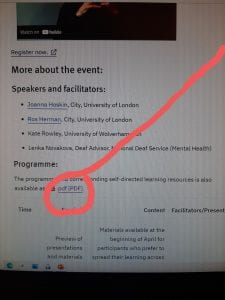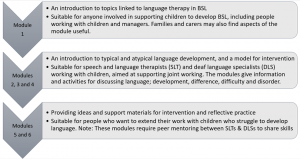The interplay between early social interaction, language and executive function development in deaf and hearing infants. Infant Behavior and Development, 64(August 2021), 101591. https://doi.org/10.1016/j.infbeh.2021.101591
Morgan, G., Curtin, M., & Botting, N. (2021).
https://www.sciencedirect.com/science/article/pii/S0163638321000667?dgcid=coauthor
This paper tells us about social interaction, language and executive function (EF). These are skills that develop early in a child’s life. Skill development is supported by people interacting with the young child. This paper tells us that early social interaction helps language and EF develop, then language and EF skills support each other (see fig. 1 p3). It outlines some challenges deaf children and their families may have.
Section 5 tells us about some clinical intervention studies. The studies give some ideas about skills to focus on (p 7) ‘skills in responsiveness, in waiting and observing their child’s play, commenting using contingent talk, and maintaining connected turns’. These ideas may help us help deaf children and families.
It’s a paper with lots of interesting technical terms. Do you use these words and phrases in your work? If you do, how do you sign them?
- Executive functions – response shifting, inhibitory control, and attention flexibility
- Social interaction
- Intersubjectivity – how children develop thinking skills that help them share each other’s intentions and ideas (See section 2)
Discussing these terms with your team will help everyone have a shared understanding of the words and signs.


